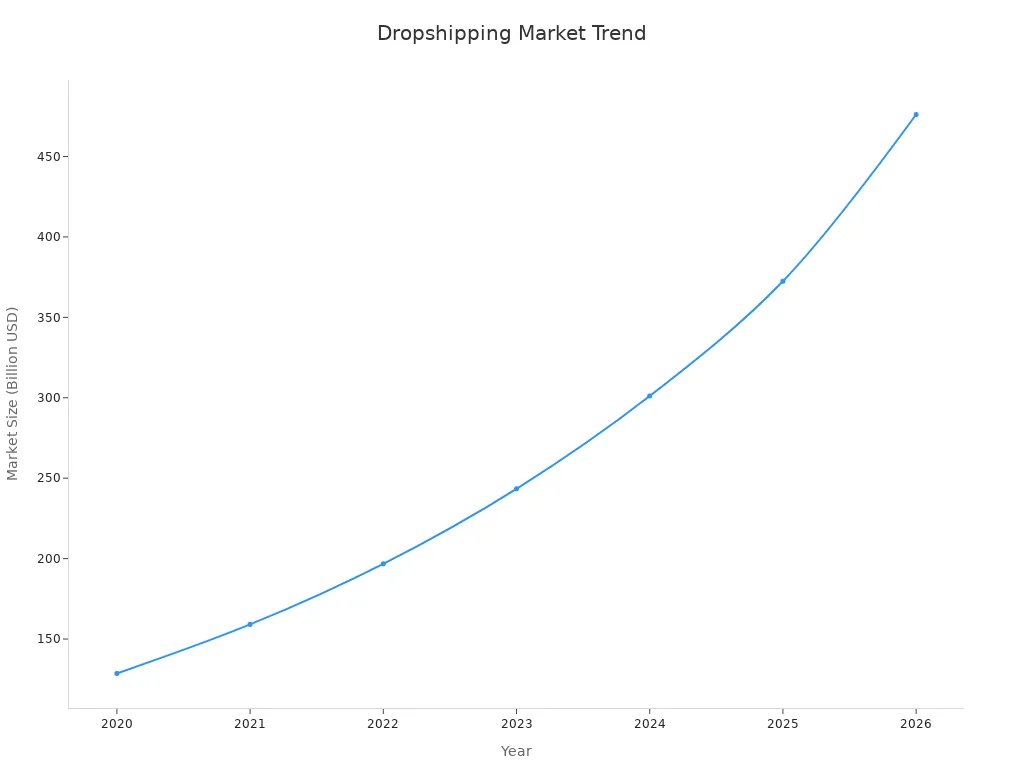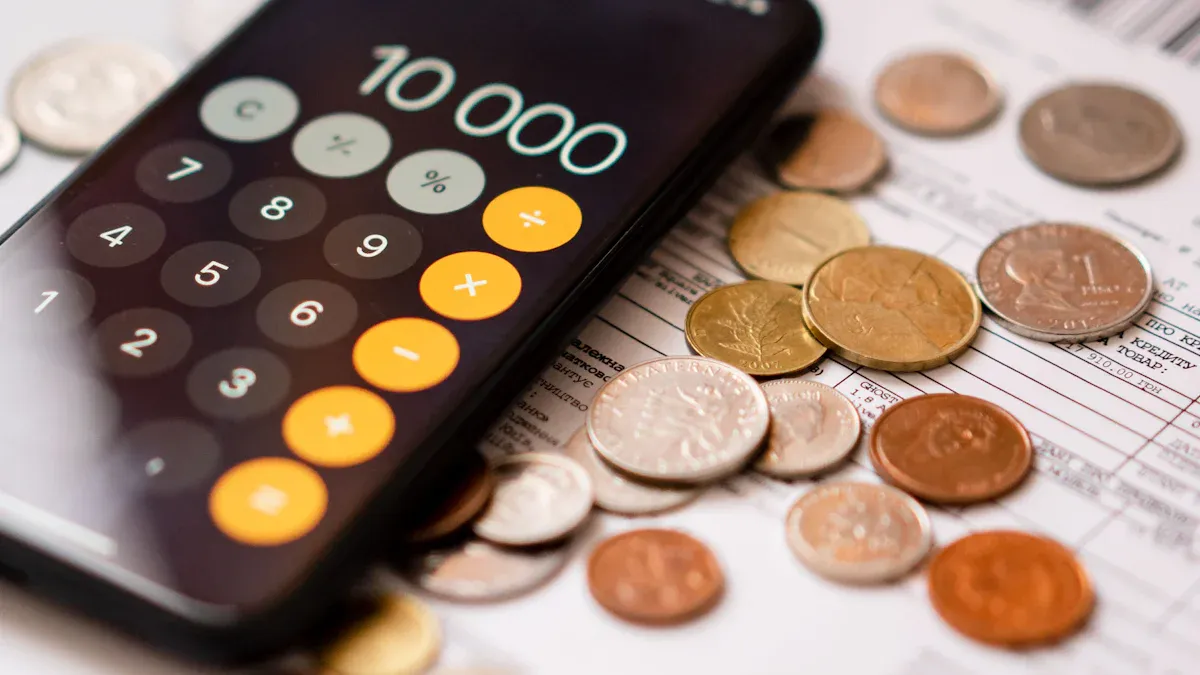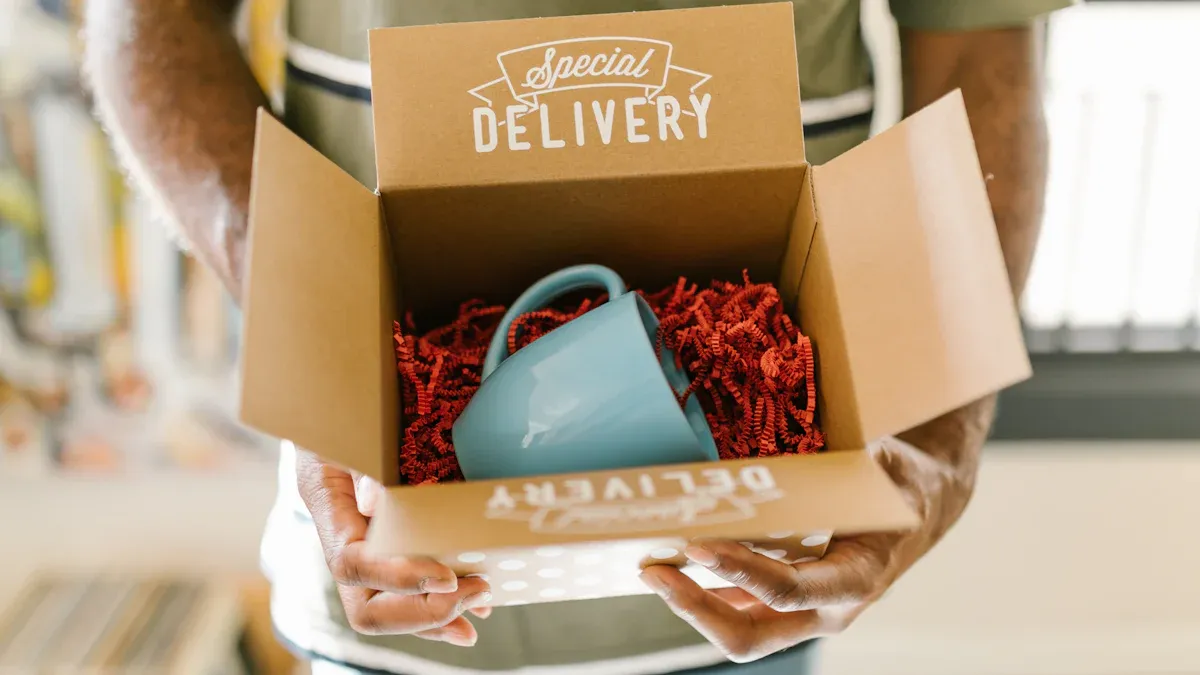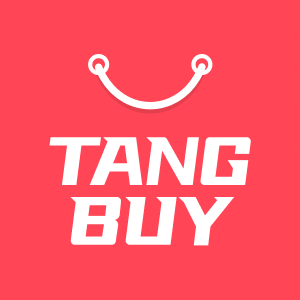The True Cost of Drop Shipping in 2025 Explained

Starting a dropshipping business in 2025 will cost between $173 and $2,000. You can expect to make a profit of 10% to 30% on each sale. You must plan for startup costs, platform fees, marketing, shipping, transaction fees, and your own time. Here is a quick look at the main expense categories:
Expense Category | Typical Cost Range / Notes |
|---|---|
Startup Costs | $50–$500 (registration), $100–$500 (branding, legal) |
Platform Fees | Free–$50/month (plans, plugins) |
Marketing Expenses | $5–$50/day (ads), $50–$500/month (SEO) |
Shipping Costs | $5–$20/order, $10–$50/month (tracking) |
Transaction Fees | 2.9% + $0.30 per transaction |
Supplier Fees | $20–$100/month (subscriptions) |
Store Setup | $10–$20/year (domain), $29+/month (hosting) |

You want real numbers, not just hype. Only about 10% of new dropshippers do well in their first year. Knowing the True Cost early helps you see if this business is right for you.
Key Takeaways
Starting a dropshipping business in 2025 costs from $173 to $2,000. This pays for setup, marketing, shipping, and fees. Profit margins are usually between 10% and 30%. You must manage costs and pick good suppliers to do well. Marketing is a big cost that never stops. You need ads and SEO to keep your store seen and sales steady. Hidden fees like payment processing and platform charges can lower profits. Shipping delays can also hurt profits if you do not plan. Dropshipping is good for people who like to learn and solve problems. You need to use digital tools, work hard, and be patient.
True Cost Breakdown

Startup Costs
You need to know exactly what you will spend before your first sale. Startup costs can surprise you if you do not plan ahead. Here is a table that shows what you might pay for each part of your dropshipping store:
Cost Category | Cost Range / Details |
|---|---|
eCommerce Platform Subscription | $29 to $500 per month depending on plan and provider |
Transaction Fees | 2.5% to 3.5% per order |
Payment Gateway Setup Fee | $0 to $200 one-time |
Payment Gateway Monthly Fee | $0 to $30 per month |
Domain Registration & Hosting | $100 to $500 annually |
Website Development (Template) | $500 to $5,000 depending on complexity |
Website Development (Custom) | $5,000 to $20,000 for fully customized design |
Website Themes | Free to $50-$200 for premium themes |
You can start with a basic setup for as little as $173 if you use a simple theme and a low-cost platform. If you want a custom website, you might spend thousands. Most new dropshippers choose a template and a mid-level plan. This keeps the True Cost lower at the start.
Tip: Start small. Upgrade your website and plan only when your sales grow.

Product and Supplier Fees
You do not need to buy inventory upfront, but you will pay for each product after a customer orders. Suppliers often charge fees for access or subscriptions. Some platforms, like Tangbuy, Shopify or Doba, may charge $20 to $100 per month for supplier access. The True Cost here depends on your product type and supplier.
The dropshipping market is growing fast. Reports show the market could reach over $332 billion in 2025. Big companies like Shopify, Etsy, and Alibaba lead the way. They connect you with suppliers and handle much of the process. You pay supplier fees as part of your order cost or as a monthly subscription. Some suppliers offer better prices if you sell more, but most new stores pay standard rates.
You should also think about the type of products you sell. Electronics, fashion, and personal care items all have different supplier fees. If you want to sell niche products, you may pay more for access to special suppliers. The True Cost of product sourcing can change as your business grows.
Shipping Charges
Shipping is a big part of your ongoing costs. You do not control shipping directly, but you pay for it with every order. Domestic shipping usually costs $5 to $20 per order. International shipping can be much higher, sometimes $30 or more. Some suppliers include tracking for free, but others charge $10 to $50 per month for tracking tools.
If you want to offer free shipping to your customers, you must cover the cost yourself. This can lower your profit margin. Shipping delays or lost packages can also add to your True Cost, especially if you need to refund customers or send replacements.
Note: Always check your supplier’s shipping times and costs before you list products in your store.
Payment Fees
Every time you make a sale, payment processors take a cut. Stripe and PayPal are the most common options for dropshipping stores. Here is a quick look at their fees:
Feature | Stripe | PayPal |
|---|---|---|
Online Transaction Fees | 2.9% + $0.30 per transaction | 2.59% - 2.99% + $0.49 per transaction |
International Fees | 4.4% + $0.30 per transaction | Higher fees depending on country/currency |
Monthly Fees | None for basic services | $5 to $30 for premium features |
You must track these fees because they add up fast. If you sell 100 items a month, you could pay $100 or more in payment fees alone. Some platforms also charge extra for currency conversion or refunds. The True Cost of payment processing is one of the easiest to overlook, but it can eat into your profits if you do not plan for it.
Alert: Always include payment fees in your pricing so you do not lose money on each sale.
Hidden Costs

Marketing Expenses
You might think you can get by with a small ad budget, but marketing is one of your biggest ongoing costs. Most dropshippers spend $300 to $500 each month on ads, social media, and SEO. If you want steady sales, you need to keep your store in front of people. Paid ads on Facebook, Instagram, and Google can eat up your budget fast. You also need to pay for email tools and maybe hire someone to help with content. If you stop marketing, your sales will drop. That’s why you must plan for these costs from the start.
Platform Fees
Platform fees are not always clear at first. You pay for your store’s monthly plan, but you also face extra charges for apps, plugins, and sales fees. Some platforms charge a percentage of every sale, while others add fees for using third-party payment gateways. Here are some hidden costs you might face:
Subscription and recurring payment models can fail due to payment declines, causing lost revenue.
About 20% of churn during free trials comes from payment declines.
Shopify’s fraud system sometimes blocks real sales, which means you lose money.
Failed payments force you to spend more to win back customers.
These hidden fees can add up and affect your True Cost more than you expect.
Customer Service
Customer service is a cost you cannot ignore. Every time a customer has a question or a problem, you need to respond quickly. If you take too long, you risk losing future sales. You should track things like how fast you answer tickets, how many complaints you get, and how happy your customers feel after you help them. Good customer service can lower your costs by keeping people happy and coming back. Many dropshippers use automation to help with order tracking and returns. This can save money and time, sometimes giving you a big return on your investment.
Time Investment
Your time is valuable. You will spend hours setting up your store, finding products, and talking to suppliers. You also need to handle customer questions and fix problems. Many new dropshippers do not count their time as a cost, but it matters. If you want to grow, you may need to hire help or use automation tools. Tracking your time helps you see the real cost of running your business.
Profit Margins
Average Margins
When you run a dropshipping store, your profit margin is the money you keep after paying all your costs. Most dropshippers see average profit margins between 15% and 20%. Some stores do a little better, reaching up to 30%, but many fall below 15% if they do not manage costs well.
Here are the main things that affect your profit margin:
Niche selection: Some products have higher markups than others. If you pick a popular niche with less competition, you can charge more.
Supplier reliability: Good suppliers help you avoid extra costs and delays. They also offer better prices if you build a strong relationship.
Pricing strategy: You need to set prices that cover all your costs and still attract buyers. If you price too low, you lose money. If you price too high, customers may leave.
Operational efficiency: Using automation tools and keeping your store organized saves time and money.
Marketing: Smart marketing, like SEO and social media, brings in more sales without raising costs too much.
Revenue streams: Selling on more than one platform or offering subscriptions can boost your profits.
External factors: Shipping costs and supply chain problems can change your margins quickly.
Tip: Most dropshippers start to see real profits after three to six months, once they learn what works and fix early mistakes.
Here’s a quick table to show how your costs and profits might look for a $50 product:
Item | Amount ($) |
|---|---|
Product Cost (from supplier) | $30 |
Shipping | $8 |
Platform & Payment Fees | $4 |
Marketing | $3 |
Profit | $5 |
Profit Margin | 10% |
If you can lower your costs or raise your price, your margin goes up. If costs rise or you have to offer discounts, your margin drops.

Pitfalls
Many new dropshippers run into problems that shrink their profit margins. You need to watch out for these common pitfalls:
Unreliable suppliers: If your supplier ships late or sends bad products, you get more refunds and angry customers. This eats into your profits and hurts your reputation.
Shipping delays: Long shipping times, especially from overseas, make customers unhappy. You may need to pay for faster shipping or offer refunds, which lowers your margin.
Hidden costs: It’s easy to forget about small fees, like payment processing or app subscriptions. These add up and can turn a profitable store into a losing one.
Poor pricing: If you do not include every cost in your price, you might sell a lot but still lose money. Overpricing can also drive customers away.
Multiple suppliers: When you use more than one supplier, orders can arrive at different times. This confuses customers and increases your support costs.
International shipping issues: Customs, tariffs, and extra fees can surprise you. These costs are hard to predict and can wipe out your profits.
Customer service challenges: Handling returns and refunds with distant suppliers takes time and money. If you do not solve problems fast, you lose repeat business.
Intense competition: Many dropshippers sell the same products. Some will lower prices just to get sales, which forces you to cut your margin.
Note: Always test your suppliers by ordering samples. Keep backup suppliers ready in case something goes wrong. This helps you avoid big losses from supplier mistakes.
If you pay attention to these pitfalls and plan for them, you can protect your profit margin. Dropshipping can be profitable, but only if you manage every detail and stay alert for hidden costs.
Worth It?
Cost-Benefit
You might wonder if dropshipping is a good use of your time and money in 2025. The answer depends on how you look at the good and bad parts. Let’s look at both sides:
Aspect | Benefits | Challenges / Costs | What You Need to Do |
|---|---|---|---|
Upfront Investment | You spend less to start, so there is less risk. It is easy to begin. | You make less money on each sale. Products cost more. | Watch every cost and set smart prices. |
Operations | Suppliers take care of shipping and keeping products in stock. | You cannot control how fast things ship or if items run out. | Pick good suppliers and check your orders. |
Profit Margins | You can spend more time on ads and growing your store. | You do not get big discounts. Fees can add up fast. | Study your rivals and change prices as needed. |
Customer Experience | You can make your brand better and improve your store. | Slow shipping or refunds can upset buyers and hurt your store’s name. | Give great help and talk clearly to customers. |
Scalability | You can add more products and sell in more places as you grow. | Problems with suppliers can slow you down. | Plan for growth and have backup suppliers. |
Tip: Dropshipping works best when you watch your numbers and fix problems quickly.
It is simple to start this kind of business, but you need to work hard to keep it running well. Many people like that there is not much risk, but you will have to accept making less money and having less control.

Who Should Try
Dropshipping is not right for everyone. You might like it if you:
Want to start a business without spending a lot.
Like trying new products and learning about online ads.
Feel okay using digital tools and automation.
Can answer customer questions and solve problems fast.
Platforms like Tangbuy, Shopify and BigCommerce help solo owners and small teams. They give you tools for automation, support, and growing your store. Experts say people who do well in dropshipping watch their money and listen to customers. They find problems early and fix them fast.
But dropshipping may not be for you if you:
Want full control over your products and shipping.
Do not like dealing with unhappy customers or returns.
Want to make a lot of money right away.
Have trouble with tech or online tools.
If you like solving problems and learning new things, dropshipping could be a smart way to start a business in 2025. But if you want fast, easy money or total control, you may want to try something else.
You now know the True Cost of dropshipping in 2025. Startup fees, marketing, and hidden charges can add up fast. Most people see profit margins between 10% and 20% after all costs. Dropshipping works if you like learning, solving problems, and tracking every dollar. Want to try? Start small and watch your numbers. If you want quick cash or total control, this business may not fit you.

FAQ
How much money do I need to start dropshipping in 2025?
You can start with as little as $173 if you use basic tools. Most people spend $500 to $2,000 for a better setup. Your costs depend on your store design, marketing, and supplier fees.
Can I make a full-time income from dropshipping?
Some people do, but most beginners earn part-time money. You need to work hard, learn fast, and manage your costs. Success takes time and smart planning.
What is the biggest hidden cost in dropshipping?
Marketing eats up a lot of your budget. Ads, SEO, and email tools can cost $300 to $500 each month. If you stop marketing, your sales will drop.
How do I avoid losing money on shipping problems?
Test your suppliers before you sell. Always check shipping times and costs. Offer tracking to your customers. If you get complaints, fix them fast to keep your store’s reputation strong.


TangBuy: A Smarter Way to Dropship in 2025
If you're looking to stay competitive with dropshipping in 2025, speed and trend-awareness are key. TangBuy helps you stay ahead with real-time product trends, fast fulfilment, and factory-direct sourcing. With over 1 million ready-to-ship items, 24-hour order processing, and seamless Shopify integration, TangBuy makes it easier to test, scale, and succeed in today's fast-moving eCommerce landscape.
See Also
Profitable Dropshipping Concepts To Try In The Year 2025
Complete Stepwise Plan For Starting Dropshipping Business 2025
Effective Ways To Manage Shipping Expenses In Dropshipping

